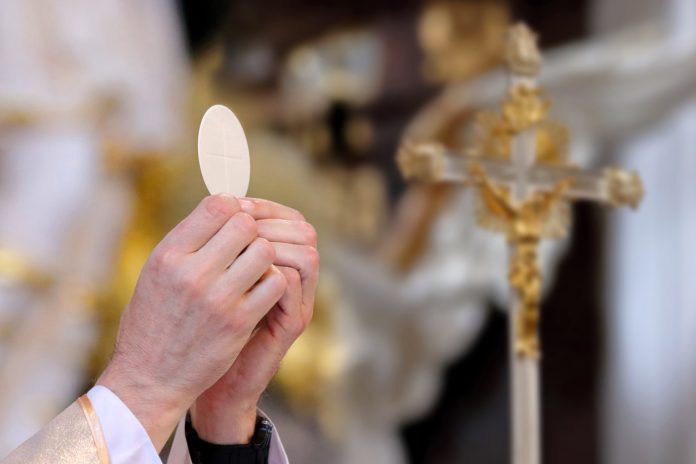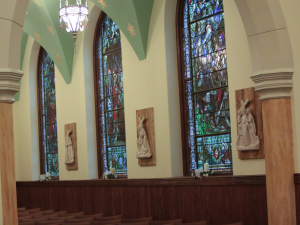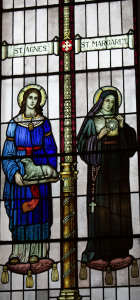
MARC CARDARONELLA
Liturgy is essential for faith formation.
You can talk and look at pictures all day, but liturgy is like a giant object lesson.
There are statues and stained glass, all sorts of symbols, vestment and altar colors, seasonal decorations, and swinging incense holders. These are the “smells and bells” of Catholicism, and they’re vital making faith real, not just abstract.
For most of us, liturgy means Mass. However, the aspect I want to concentrate on here is the liturgical year, and how celebrating these seasons as a family helps your child’s faith development.
We all love seasons. Think of the excitement that builds toward holidays like Thanksgiving and Christmas. The liturgical year uses the same dynamic. Lent emphasizes penance. Christmas is about celebration. The seasons change things up, so you have different things to look forward to or think about. You get tired of the same thing all the time.
The two highlights of the year are Christmas and Easter. Other seasons revolve around them. In Advent, we prepare for Christmas. Of course, no one has a problem getting ready for Christmas, but you can’t stop at Santa, Rudolf, and presents. Advent helps you dive into the Christian meaning of Christmas. Lent prepares you for the Christian meaning of Easter.
 From an early age, you should celebrate important feast days as a family and do activities together that train your children to understand their true meaning.
From an early age, you should celebrate important feast days as a family and do activities together that train your children to understand their true meaning.
Let’s look at Advent for example. Activities like Advent wreaths and Advent calendars that count down the days before the big event. Along the way, they highlight the biblical events leading up to Christ’s birth and shed meaning on his mission.
The Jesse Tree is an object lesson teaching the genealogy of Jesus. Every day of Advent, you learn how different Old Testament characters foreshadowed the life and mission of Jesus. There are also books that tell the story of Jesus’ birth in the form of historical fiction. Reading a chapter every day as a family moves you through Advent and communicates what Christmas is all about. There are similar books for Lent that slowly work through the events leading to Jesus’ Passion and Resurrection at Easter.
As you do these activities at home, your kids see things changing at Mass — different colors, decorations, vestments, etc. That makes the lessons more real and the Mass more interesting.
Many countries have unique ways of celebrating saint’s feast days and holy days, often revolving around special foods. These are my favorite family activities. You can find books containing feast day recipes from around the world. Usually, the food has a symbolic meaning pointing to something in that Saint’s life or teaching a theological concept. Again,  it’s a great object lesson, especially for small children.
it’s a great object lesson, especially for small children.
Speaking of saints, another important aspect of the liturgical year is following the calendar of saint’s feast days. Numerous books, at all age levels, give short biographies of the saints on their feast days. Consider reading about the saint of the day every morning at breakfast. My wife did this all the time with our boys. Saints give concrete examples of people who got it right. They can inspire us and show us holiness is possible.
Because it’s sensory, liturgy provides concrete lessons of faith that kids remember. Those “smells and bells” stick with them. If you connect the “why” with tangible activities (and sometimes tastes), you have an unbeatable combination for teaching that sticks.
That’s why liturgy is vital for family faith formation.
:::
This is the fourth of four posts in this series. Read Part 1 here.
:::
MARC CARDARONELLA, MA, is director of the Office of Discipleship and Faith Formation in the Diocese of Kansas City-St. Joseph. He is the author of Keep Your Kids Catholic: Sharing Your Faith and Making It Stick and blogs at MarcCardaronella.com.
Image credits:
Banner: Credit: wideonet / Stock 886182946
Interior photos: George Martell/ Bayard




